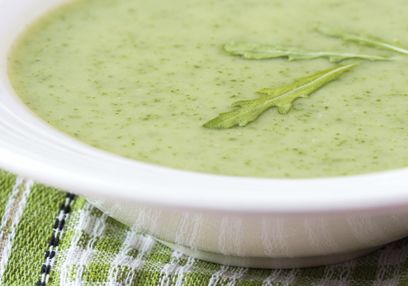Why are these changes happening?
Welcome to the experience of life as a woman, an experience that includes something known as premenstrual syndrome (PMS). Most females experience 'menarche', otherwise known as the first period between the age of 11.53 and 13.91 years for those in Canada. This will bring along many physical and emotional changes as the female body transitions into a state with reproductive potential.
What symptoms are characteristic of premenstrual syndrome?
The symptoms of PMS are many, and while there are differences based on the individual experience, these are just a few to name: Abdominal bloating, cramps, constipation, diarrhea, changes to libido, mood swings, nervousness, cravings (especially for sweets), water retention, fatigue, irritability, acne, etc.
Why do mood swings occur during this transition?
As is the answer for many conditions, becoming more prone to mood swings is the result of a combination of factors including changes to sleep and blood flow.
Everyone has had nights of restless sleep where nothing seems to put you back to sleep, whether it's the kids trying to crawl into bed with you, a dog who needs to pee, or a racing mind. For those experiencing the days preceding their period, these sudden attacks of shifts in mood during the night can make a full night's sleep a thing of the past.
This can put strain not only on your own mental and physical health, but that of your bed partner as well. One study demonstrated that estrogen-replacement therapy improved sleep quality including how often participants were waking and how tired they felt the following morning. Beyond sleep quality, these women also reported a decrease in their vasomotor symptoms, mood symptoms, and muscular pain.
Estrogen – the hormone responsible for the regulation and development of the female reproductive system - plays a significant role in impacting cerebral blood flow by enhancing the release of nitric oxide, a vasodilator, from neural blood vessels. It can also convey neuroprotective effects on brain tissue as it acts on certain receptors to stimulate the formation of new blood vessels in the brain, where appropriate, and can exert some direct antioxidant effects. When the estrogen levels fluctuate, the cerebral blood flow changes and may contribute to the experience of mood swings.
Are there any risk factors I should be mindful of?
- Obesity – having extra weight causes changes in hormone pathways and how they are metabolized. Obese women have reduced levels of sex hormone binding globulin (SHBG) which is responsible for taking the biologically active free estradiol out of play. This disturbs the negative feedback system of estrogen, resulting in lower levels of the gonadotropins, FSH and LH. Obesity has also been linked to increased rates of mood disorders, depression, anxiety to the tune of 25% greater risk in one study.
- Smoking – along with the laundry list of issues that smoking contributes to, throwing your hormone balance off the rails is another to add. Smoking is associated with higher rates of infertility, more difficult menstrual cycles, and increases the risk of moderate to severe PMS symptoms. Combine the erratic moods swings as a result of nicotine withdrawal to the mood fluctuations associated with estrogen depletion, and you've created the perfect storm. Smoking also impacted steroid metabolites, with heavy smokers demonstrating levels 25-35% higher than non-smokers. These metabolites can alter endocrine function in premenstrual women.
- Ethnicity – studies have demonstrated that East Asian women experience the lowest risk of premenstrual cramps and other associated symptoms, while African American women are most likely to report such symptoms.
What are my options for finding some stability?
Yoga has shown significant benefit in a study where participants performed yoga daily for 3 months and another where the therapy was performed for 8 weeks. Those in the yoga group experienced a significant improvement in symptoms, stress, and mood changes. The benefits of this aerobic exercise are that it can be modified for those with altered mobility and can be gentle enough for those who may experience musculoskeletal difficulties.
Nutrient deficiencies have also been shown to play a large role in the experience of PMS symptoms. Ovarian hormones can significantly influence minerals such as calcium, magnesium, and even vitamin D. Women experiencing PMS have been shown to have reduced levels of magnesium carried in their red blood cells which contributes to fatigue, irritability, and mental confusion. Some smaller trials have demonstrated the ability of magnesium to alleviate bloating and improve mood symptoms. Other trials looked at calcium supplementation which showed benefits on mood symptoms during the luteal phase of a woman's cycle.
Finally, some herbal remedies may benefit your experience. The most common herb to treat PMS symptoms is known as Chaste Tree (Vitex agnus-castus) which has been used as early as the time of the Greek physician, Disoscorides, between 50 and 70 AD. In a high-quality randomized control trial, 170 were to receive a placebo or the fruits of the herb. In the group treated with Vitex, they experience a 52% reduction in symptoms compared to 24% for the placebo. Other studies have produced similar results.
While nothing much can be said for placebo, it's interesting to note that in the women who thought they were receiving something, some still experienced a reduction. This demonstrates the power of the mind over the body, and could explain benefits of another herb known as Passion Flower (Passiflora incarnata) which has wonderful calming properties and can also help to regulate mood swings due to fluctuations in estrogen. Ensure you have a discussion with your primary care provider prior to starting any new herbal products or supplements to determine what's best for you.
https://bmcpublichealth.biomedcentral.com/articles/10.1186/1471-2458-10-736
https://jamanetwork.com/journals/jamapsychiatry/fullarticle/209790
https://www.ncbi.nlm.nih.gov/pmc/articles/PMC26589/
https://www.ncbi.nlm.nih.gov/pmc/articles/PMC2727205/
https://www.ncbi.nlm.nih.gov/pmc/articles/PMC5615478/
https://www.ncbi.nlm.nih.gov/pubmed/9609575
https://www.ncbi.nlm.nih.gov/pubmed/10817919
https://www.ncbi.nlm.nih.gov/pubmed/11297335
https://www.ncbi.nlm.nih.gov/pubmed/15181033
https://www.ncbi.nlm.nih.gov/pubmed/16203235
https://www.ncbi.nlm.nih.gov/pubmed/20031086
https://www.ncbi.nlm.nih.gov/pubmed/28846960
https://www.physiology.org/doi/full/10.1152/japplphysiol.01095.2005






